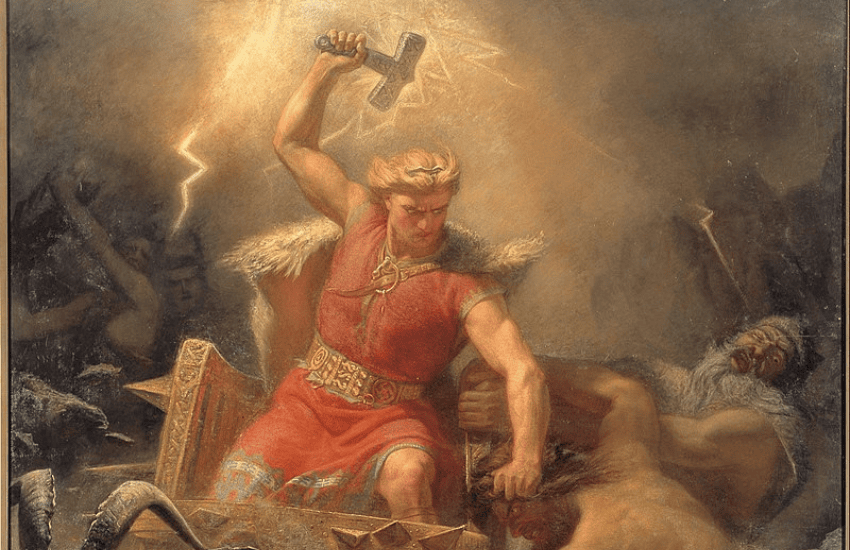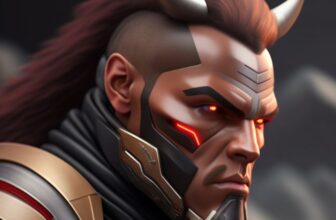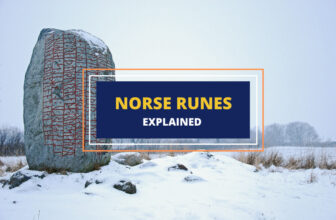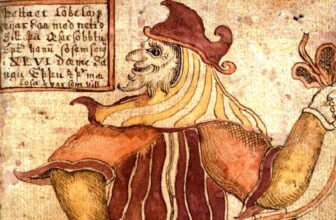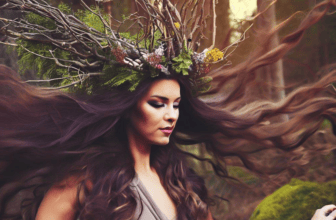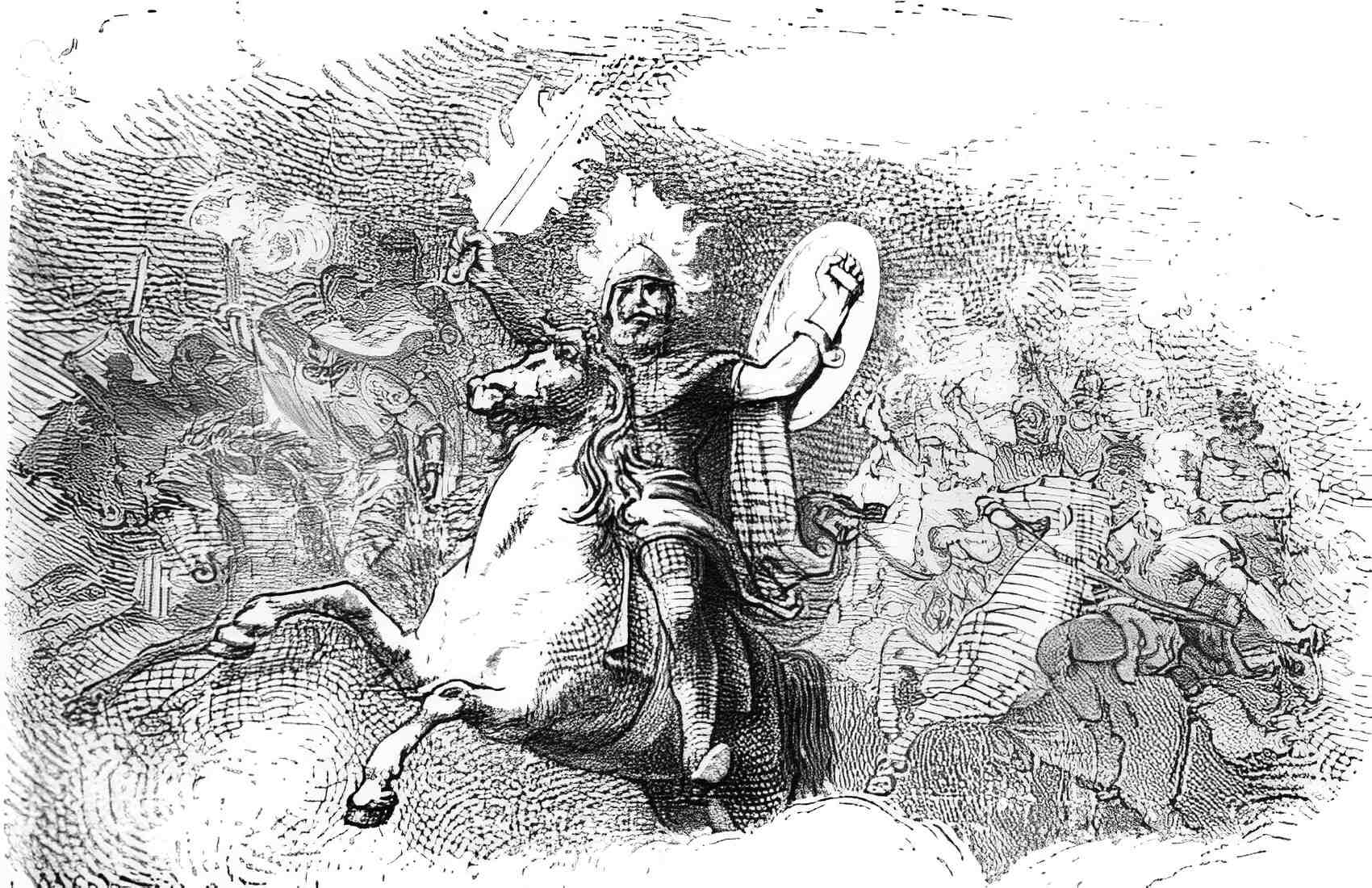
Table of Contents
Surtr is a popular figure in Norse mythology, and one who plays a pivotal role during the events of the end of the Norse world, Ragnarok. Although he’s sometimes viewed as a Satan-like figure, Surtr is much more ambivalent and his role is more subtle than the devil.
Who Is Surtr?
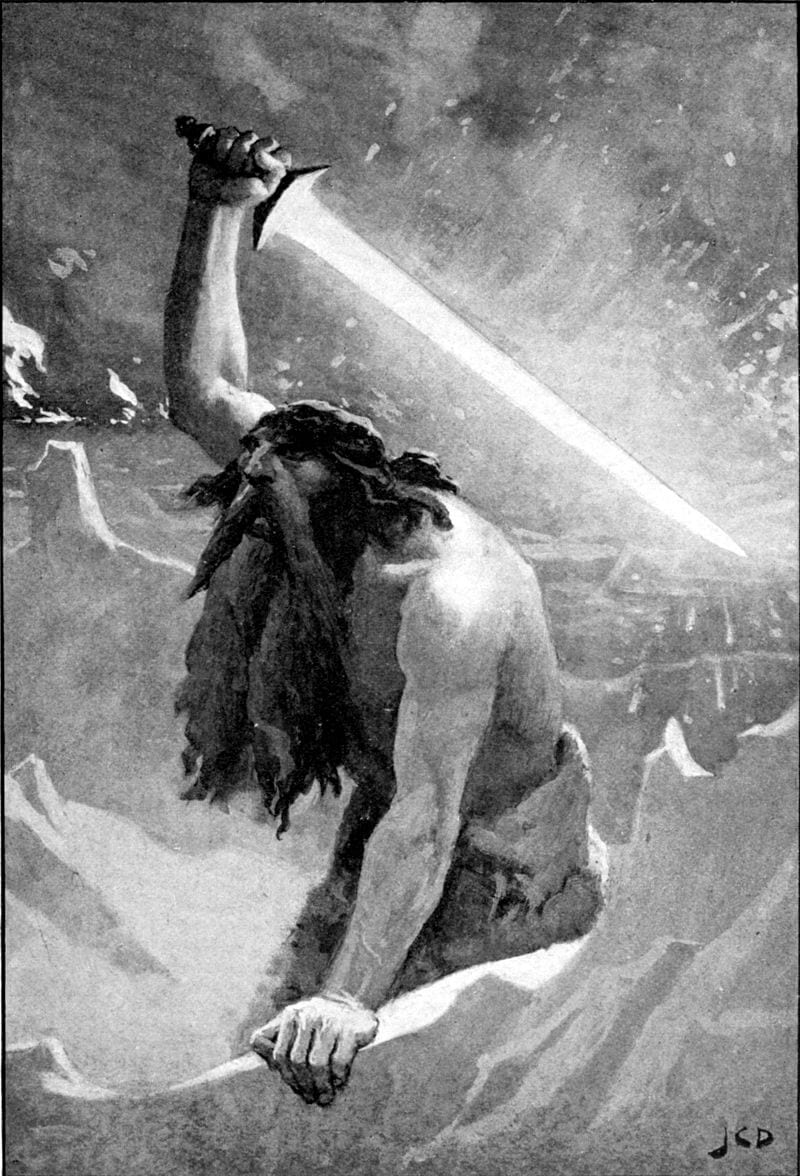
Surtr’s name means “Black” or “The Swarthy One” in Old Norse. In case you were wondering how to pronounce his name, it goes something like soo-tr. He is one of the many antagonists of the gods during Ragnarok (the destruction of the cosmos) and is arguably the one to wreak the most havoc and destruction during that final war between the gods and their enemies.
Surtr is often depicted wielding a flaming sword that shines brighter than the sun. In most sources, Surtr is described as a jötunn. What a jötunn is, however, is quite difficult to explain.
What Does It Mean to Be a Jötunn?
In Norse myths, the jötnar (plural for jötunn) are often referred to as “the opposite of the gods”. From a Judeo-Christian point of view it’s easy to associate that with devils and demons. However, that wouldn’t be accurate.
The jötnar are also often depicted as giants in many sources but they weren’t necessarily giant in size either. Additionally, some of them were said to be astonishingly beautiful, while others were called grotesque and ugly. So, it’s really difficult to pinpoint what these beings were by comparing them to creatures that may exist in mythologies we’re more familiar with.
What we know is that the jötnar were descended from Ymir, a proto-being in Norse mythology who reproduced sexlessly and gave “birth” to the jötnar from his own body and flesh. Ymir was eventually killed by Odin and his two brothers Vili and Vé. His body was then dismembered and the world was created from it. As for Ymir’s descendants, the jötnar, they survived the event and sailed through Ymir’s blood until they eventually ended up in one of the nine realms in Norse mythology – Jötunheimr. Yet, many of them (like Surtr) ventured and lived elsewhere too.
This essentially gives the jötnar an “old gods” or “primordial beings” type of depiction. They are the remnants of an old world that predates, and was used to create, the current world. All this doesn’t necessarily make the jötnar “evil” and not all of them seem to be depicted that way. However, as opponents of the gods, they were usually viewed as the antagonists in Norse myths.
Surtr Before and During Ragnarok
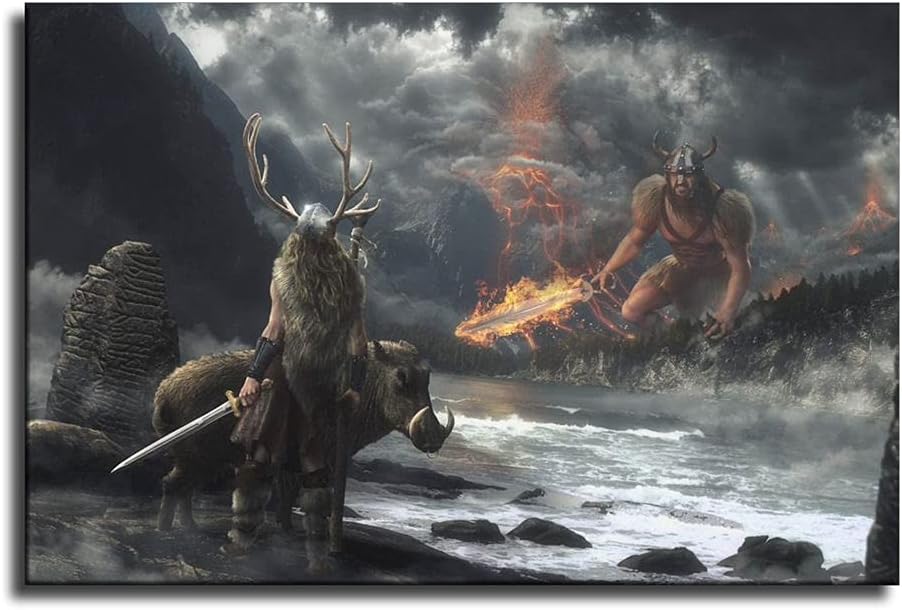
Despite being a jötunn, Surtr didn’t live in Jötunheimr. Instead, he spent his life guarding the frontier of the fiery realm Múspell and protecting the other realms from “Múspell’s sons.”
During Ragnarok, however, Surtr will lead those “Múspell’s sons” into battle against the gods, while waiving his bright flaming sword above him and bringing fire and destruction in his wake. This is described in the 13th century Poetic Edda texts as:
Surtr moves from the south
with the scathe of branches:
there shines from his sword
the sun of Gods of the Slain. x
During Ragnarok, Surtr will battle and kill the god Freyr. After that, Surtr’s flames will engulf the world, bringing Ragnarok to an end. After the great battle, a new world will emerge from the seas and the whole Norse mythological cycle will begin anew.
And if you’re wondering why we’re using the future tense to describe what happens after Ragnarok, it’s because this event is yet to occur in the world of Norse mythology. The world is still being ruled by the Norse pantheon and hasn’t come to an end yet.
Surtr’s Importance in Ragnarok
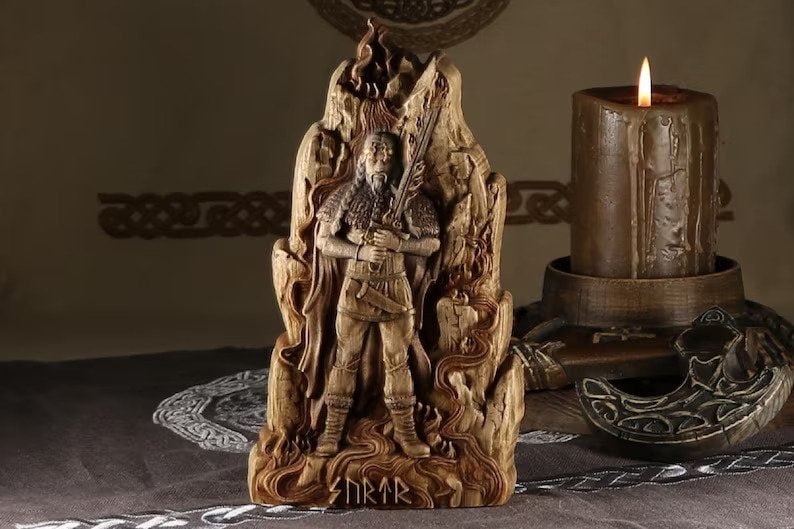
Surtr is one of several beings and monsters in Norse mythology to be prominently featured in Ragnarok. He has a prominent role in the end of the world as the Vikings knew it.
Like the World Serpent Jörmungandr who initiates the last great war, like the dragon Níðhöggr who brings the world closer to Ragnarok by gnawing at the World Tree Yggdrasill’s roots, and like the wolf Fenrir who kills Odin during Ragnarok, Surtr is the one who ends the war by enveloping the whole world in fire.
In that way, Surtr is usually viewed as the last, greatest, and insurmountable foe of the gods of Asgard and the heroes of Midgard. While Thor at least managed to kill Jörmungandr before falling victim to his venom, Surtr remains undefeated as he destroys the world.
Surtr’s Symbolism
In terms of symbolism, Surtr is primarily associated with fire and destruction. His name even means “Black” or “The swarthy one” in Old Norse, probably in reference to the soot and blackness of fire. He is a symbol of an all-consuming fire, the end of life, and the cataclysmic forces of chaos and destruction.
However, Surtr’s role in Ragnarök isn’t only about destruction. Norse cosmology often portrays the world as being in a constant cycle of creation, destruction, and rebirth. Surtr’s act of burning the world is part of this cycle. He destroys the old world, but from the ashes, a new world will rise, pure and reborn. Thus, Surtr can also symbolize the necessary aspect of destruction that allows for renewal and rebirth.
In most writings, Surtr will arrive at Ragnarok from the south, which is bizarre as the jötnar are usually said to live in the east. That’s most likely because of Surtr’s connection to fire which, for the Nordic and Germanic people, was usually associated with the south’s heat.
Ironically, some scholars draw parallels between Surtr’s fiery sword and the flaming sword of the angel who dispelled Adam and Eve from the Garden of Eden. And, just like Surtr was prophesied to come from the south and bring the world to an end, Christianity came from the south and brought an end to the worship of most Nordic gods.
Wrapping Up
Surtr continues to be an intriguing figure in Norse mythology and is neither good nor evil. He is a major figure during the series of events of Ragnarok and will ultimately destroy the Earth with flames. In this sense, he’s one of the most important Norse beings. He represents chaos, fire, and destruction, but also the renewal and rebirth of the world.
Related Articles
Fenrir in Norse Mythology: The Origins and Significance
Norns – The Mysterious Weavers of Fate in Norse Mythology
Yggdrasil Tree of Norse Mythology – Origins and Meaning
Huldra – The Seductive Forest Beings of Norse Mythology
Folkvangr – Freyja’s Field of The Fallen (Norse Mythology)
15 Unique Creatures of Norse Mythology
20 Norse Gods and Goddesses and Why They’re Important (A List)
